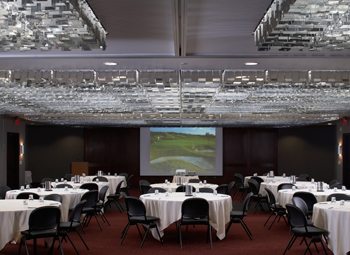Consumer confidence in the group travel industry appears to be improving. Visit Milwaukee saw a 49 percent increase in event bookings in 2015 over the previous year, and more groups are scheduling their conventions five to seven years in advance.
Still, Paul Upchurch, president and chief executive officer of Visit Milwaukee, said until the city expands its convention center, it can’t compete with other markets of its size. In fact, as it stands now, Milwaukee’s convention center is on the same scale as Grand Rapids, Mich., Upchurch said.
“We’ve got a ways to go to keep up with cities that have similarly-sized populations and similarly-sized economies,” Upchurch said. “We don’t want to fall into competing with cities that are much smaller.”
The smaller exhibit space means Milwaukee misses out on a large segment of potential business in two ways: The city can’t go after certain business; and the city misses opportunities to stack conventions on top of each other, Upchurch said.
“It’s a pretty common selling strategy to fit two medium-sized conferences in at once – we can’t do that,” Upchurch said. “There are also corporate events, even in our region, that are too large for us. We knew when we built this it wasn’t large enough, but the plan was to expand in phases.”
The expansion would cost about $200 million and would be built just north of the current Wisconsin Center, in the area bordered by West Wells Street, West Kilbourn Avenue, North Fourth and North Sixth streets.
The center, which was built in 1998, is about 266,000 square feet, with about 189,000 square feet of exhibit space.
By comparison, Cincinnati has 196,800 square feet; Columbus has 373,000 square feet; Minneapolis has 475,000 square feet; and Indianapolis has two venues totaling 749,000 square feet of exhibit space.
An expansion would give Milwaukee about 250,000 square feet of exhibit space, Upchurch said.
In 2014, the Wisconsin Center District, which owns and operates the convention center, the UW-Milwaukee Panther Arena and the Milwaukee Theatre, hired a Chicago consultant to look at expanding the convention center.
Chicago-based HVS Convention, Sports & Entertainment Facilities Consulting concluded expansion would be most successful if planned simultaneously with the new Milwaukee Bucks arena.
A state law passed in summer 2015 gave ownership of the new Bucks arena to the Wisconsin Center District and required the district to provide $93 million for the arena. That financial obligation for the arena project left some people believing expansion of the convention center would be put on hold for years, if not indefinitely.
But Upchurch believes the consultants are correct and now is the perfect time to take action, although the question of where the money will come from is still unanswered.

Half of the $500 million Bucks arena will be paid for with public financing that will come from state, Milwaukee County, City of Milwaukee and Wisconsin Center District funding sources. In addition, a $2 surcharge will be charged on all tickets sold for events at the arena. The ticket surcharge revenue will be split by the Wisconsin Center District (getting 75 percent) and the state (getting 25 percent).
“It’s no different than the past, when we had to get creative on how we get this funded; now we just have to get a little more creative,” Upchurch said. “If you look at the Bucks’ development, the entertainment center and all of the development they are putting around the arena, this is a once in a lifetime chance to do something really special. We can have an impact on having demand for this area year-round.”
Alderman Robert Bauman, who is on the Wisconsin Center District board, said the only way the convention center can be expanded is if the state Legislature increases one or more of the taxes that fund the district. Those funding sources are the rental car tax, the Milwaukee County food and beverage tax, and hotel taxes from the city and the county.
“Thanks to the legislation the state passed on the arena, convention center expansion is not possible,” Bauman said. “I do believe it is needed – they made their case and have convinced me.”
Large conventions are typically defined as those that use a Milwaukee venue, such as the convention center, and fill at least 1,000 hotel rooms in a minimum of two Milwaukee hotels. Large conventions ultimately provide more revenue for hotels, restaurants and area retail.
In 2015, Visit Milwaukee had 567 overall bookings, compared to 380 in 2014. Several of those events were small; however, there were some notable large events, including the annual Northwestern Mutual Life Insurance Co. conference that draws 10,000 and two new events The Water Council has brought to the area.
In 2015, the convention center had a total economic impact of $97 million, said Marco Bloemendaal, senior vice president of sales for Visit Milwaukee.
Major 2016 conventions include the International Cheese Technology Exposition in April, 3,200 attendees; American Society for Quality international conference in May, 3,000 attendees; National Main Street Center’s conference in May, 1,600 attendees; and Bombardier Recreational Products’ convention in June, 2,200 attendees.
“2015 was a crossroads year for us,” Bloemendaal said. “It was strong, economy wise, but the meetings were smaller and short term. Then on the flip side, we saw a lot of groups looking at cities like ours for 2020 and beyond.”


